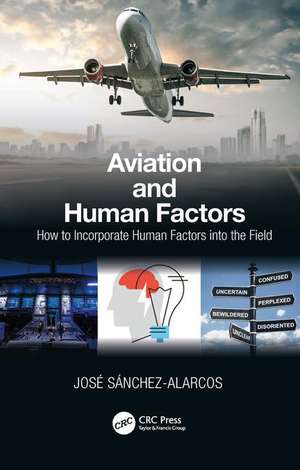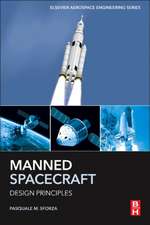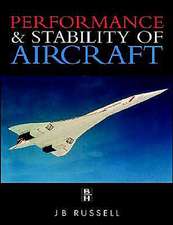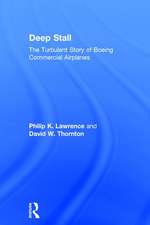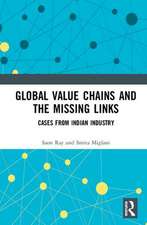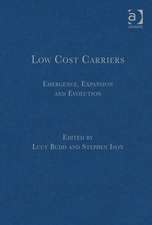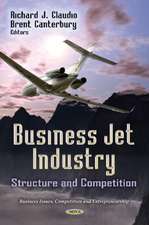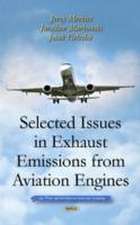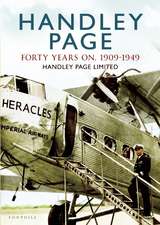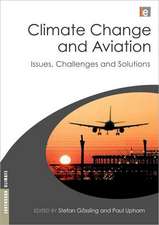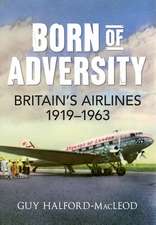Aviation and Human Factors: How to Incorporate Human Factors into the Field
Autor Jose Sanchez-Alarcosen Limba Engleză Hardback – 25 iun 2019
Air Safety is right now in a point where the chances to be killed in an Aviation accident are far lower than the chances to get the big prize in many of the major lotteries. However, keeping or improving that performance level requires a critical analysis of some events that, despite scarce, point to structural failures in the learning process. The effect of these failures could increase in the next future if there is not a clear and right development path. This book tries to identify what is wrong, why there are things to fix and some Human Factors principles to keep in aircraft design and operations.
Features
- Shows, through different events, how the whole system learns through Technology, practices and regulations and the pitfalls of that learning process
- Discusses the use of Information Technology in safety-critical environments and why procedural knowledge is not enough
- Presents Air Safety Management as a successful process but, at the same time, failures coming from Technological and Organizational features are shown
- Offers ways to improve from the Human Factors side, by getting the right lessons from recent events
| Toate formatele și edițiile | Preț | Express |
|---|---|---|
| Paperback (1) | 310.81 lei 43-57 zile | |
| CRC Press – 31 mai 2023 | 310.81 lei 43-57 zile | |
| Hardback (1) | 998.98 lei 43-57 zile | |
| CRC Press – 25 iun 2019 | 998.98 lei 43-57 zile |
Preț: 998.98 lei
Preț vechi: 1218.27 lei
-18% Nou
191.22€ • 207.77$ • 160.72£
Carte tipărită la comandă
Livrare economică 21 aprilie-05 mai
Specificații
ISBN-10: 0367245736
Pagini: 203
Ilustrații: 13 Illustrations, black and white
Dimensiuni: 156 x 234 x 18 mm
Greutate: 0.42 kg
Ediția:1
Editura: CRC Press
Colecția CRC Press
Public țintă
General and Professional Practice & DevelopmentCuprins
Notă biografică
Recenzii
'Aviation safety has been related to learning for decades. Human and technological considerations in safety must have a more balanced approach. This book explains how to relocate the role of technology in aviation.' Juan Carlos Lozano, IFALPA Accident Analysis Committee
'Timely, necessary, and outspoken – Sanchez-Alarcos Ballesteros’ book explains how our way of learning to be safer may inherently retard our ability to learn more than we already know. He cogently lays out why we need to go beyond even more technology or even more regulations if we want to keep making progress on safety.' Sidney Dekker, Griffith University
'The author presents a sound analysis of how modern aviation systems progressed by relying primarily on complex technology and flawless regulation. While this learning model increases capabilities to manage expected events, it lacks the power to respond adequately to unforeseen ones, because trust in the abilities of the human operator has been relinquished. This is a book that should be read by decision makers in the airframe manufacturing and insurance industries.' Hans-Juergen Hoermann, German Aerospace Center (DLR)
'This book makes for fascinating reading for professionals interested in cognitive and educational psychology; human factors in aviation piloting; aircraft software design, development and usability; transportation safety, policy, economics, and ethics; business management; and organization development. Human factors/ergonomics professionals will be especially interested in this work because of applications to human-computer interaction, human-systems integration, human decision making and individual differences in dynamic environments, modeling/simulation, test/evaluation and training/development.' Ergonomics in Design, Winter 2010
"Jose Sanchez-Alarcos has written an important book. Anyone interested in safety should read it." Dr. Simon Bennett, Director, Civil Safety and Security Unit, University of Leicester, United Kingdom.
Descriere
Air Safety is right now in a point where the chances to be killed in an Aviation accident are far lower than the chances to get the big prize in many of the major lotteries. However, keeping or improving that performance level requires a critical analysis of some events that, despite scarce, point to structural failures in the learning process. The effect of these failures could increase in the next future if there is not a clear and right development path. This book tries to identify what is wrong, why there are things to fix and some Human Factors principles to keep in aircraft design and operations.
Features
- Shows, through different events, how the whole system learns through Technology, practices and regulations and the pitfalls of that learning process
- Discusses the use of Information Technology in safety-critical environments and why procedural knowledge is not enough
- Presents Air Safety Management as a successful process but, at the same time, failures coming from Technological and Organizational features are shown
- Offers ways to improve from the Human Factors side, by getting the right lessons from recent events
